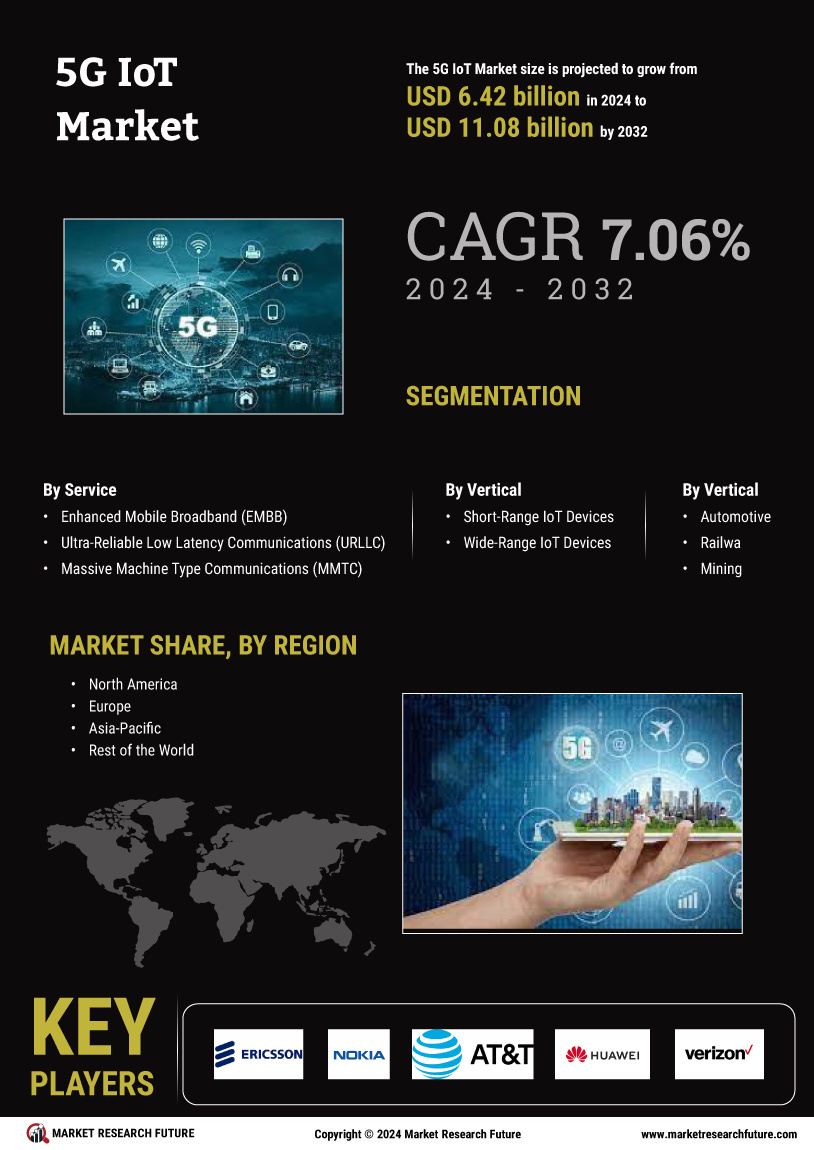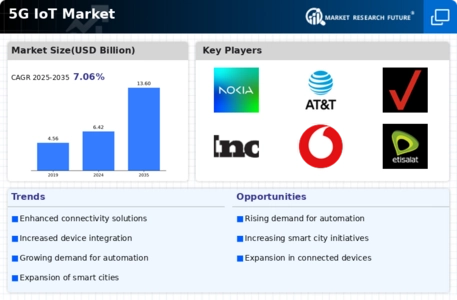Growth of Smart Agriculture
The 5G IoT Market is poised for growth due to the increasing adoption of smart agriculture practices. Farmers are leveraging IoT technologies to monitor crop health, optimize irrigation, and enhance yield. The integration of 5G technology facilitates the deployment of sensors and drones that provide real-time data on soil conditions and weather patterns. It is estimated that the smart agriculture market could reach 23 billion USD by 2025, highlighting the potential for the 5G IoT Market to support agricultural innovation. This trend not only improves productivity but also promotes sustainable farming practices.
Rising Demand for Smart Cities
The 5G IoT Market is experiencing a surge in demand driven by the increasing focus on smart city initiatives. Urban areas are adopting IoT technologies to enhance infrastructure, improve public services, and optimize resource management. According to recent data, investments in smart city projects are projected to reach approximately 1 trillion USD by 2025. This trend indicates a robust growth trajectory for the 5G IoT Market, as cities leverage advanced connectivity to support applications such as smart traffic management, waste management, and energy efficiency. The integration of 5G technology is expected to facilitate real-time data exchange, thereby enhancing the overall efficiency and sustainability of urban environments.
Emergence of Connected Vehicles
The 5G IoT Market is significantly impacted by the emergence of connected vehicles, which are increasingly equipped with IoT technologies. These vehicles utilize 5G connectivity to enhance navigation, improve safety features, and enable vehicle-to-everything (V2X) communication. The automotive industry is projected to invest over 50 billion USD in connected vehicle technologies by 2025, indicating a robust growth opportunity for the 5G IoT Market. As consumers demand smarter and safer transportation options, the integration of 5G networks will be crucial in supporting the development of autonomous driving and advanced driver-assistance systems.
Expansion of Wearable Technology
The 5G IoT Market is witnessing a notable expansion in wearable technology, which is increasingly integrated with IoT capabilities. Wearables such as smartwatches and health monitors are becoming more prevalent, driven by consumer demand for health tracking and fitness monitoring. The market for wearable devices is projected to exceed 100 billion USD by 2025, indicating a substantial opportunity for the 5G IoT Market. Enhanced connectivity provided by 5G networks allows for seamless data transfer and real-time health monitoring, which could lead to improved healthcare outcomes and personalized health management solutions.
Advancements in Industrial Automation
The 5G IoT Market is significantly influenced by advancements in industrial automation. Industries are increasingly adopting IoT solutions to streamline operations, enhance productivity, and reduce costs. The implementation of 5G technology enables faster data transmission and real-time monitoring, which are crucial for automated processes. Reports suggest that the industrial IoT market is anticipated to grow at a compound annual growth rate of over 25% through 2025. This growth is likely to drive the demand for 5G connectivity, as manufacturers seek to implement smart factories and connected supply chains, thereby transforming traditional manufacturing paradigms.

















Leave a Comment